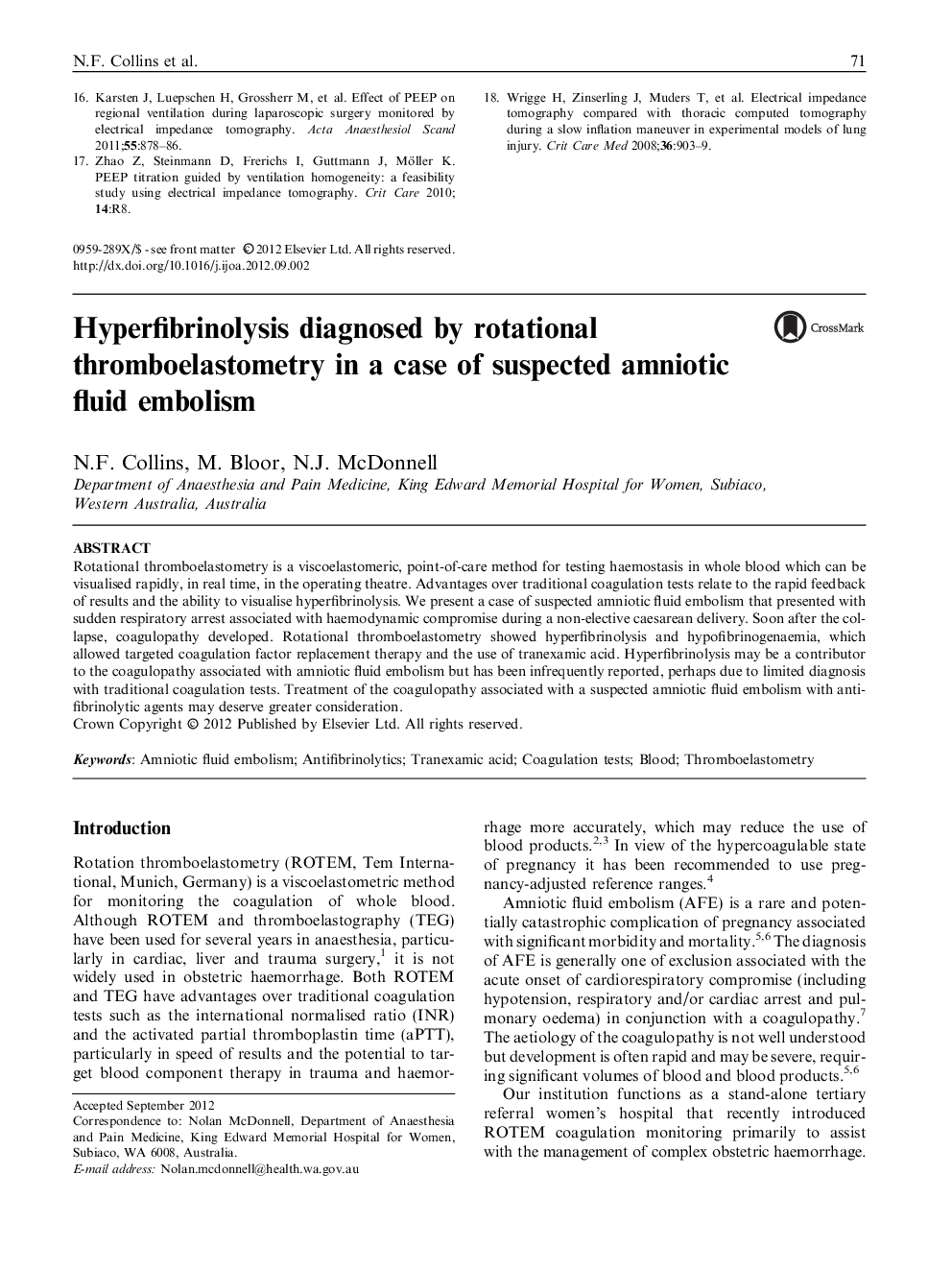| Article ID | Journal | Published Year | Pages | File Type |
|---|---|---|---|---|
| 2757870 | International Journal of Obstetric Anesthesia | 2013 | 6 Pages |
Rotational thromboelastometry is a viscoelastomeric, point-of-care method for testing haemostasis in whole blood which can be visualised rapidly, in real time, in the operating theatre. Advantages over traditional coagulation tests relate to the rapid feedback of results and the ability to visualise hyperfibrinolysis. We present a case of suspected amniotic fluid embolism that presented with sudden respiratory arrest associated with haemodynamic compromise during a non-elective caesarean delivery. Soon after the collapse, coagulopathy developed. Rotational thromboelastometry showed hyperfibrinolysis and hypofibrinogenaemia, which allowed targeted coagulation factor replacement therapy and the use of tranexamic acid. Hyperfibrinolysis may be a contributor to the coagulopathy associated with amniotic fluid embolism but has been infrequently reported, perhaps due to limited diagnosis with traditional coagulation tests. Treatment of the coagulopathy associated with a suspected amniotic fluid embolism with antifibrinolytic agents may deserve greater consideration.
